Saturday 9th March 2019
Today we are fulfilling an ambition which Robert has held since he first saw pictures of the trains on the Darjeeling Himalayan Railway [DHR] over 40 years ago.
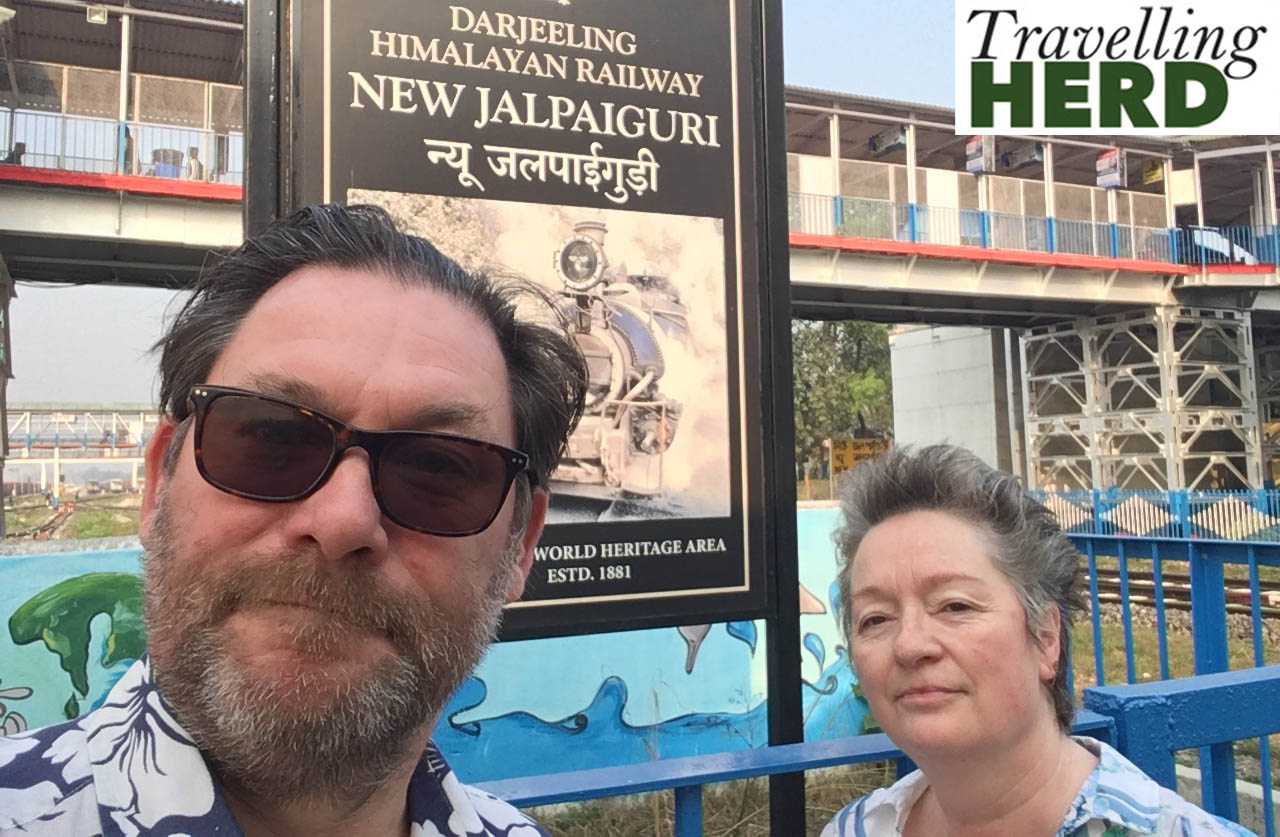
When the 08:30 service from New Jalpaiguri to Darjeeling pulled into the station it was already just over an hour late.
By the time the diesel had been refuelled; the engine moved to what would now be the front of the train; the passengers had videoed this and taken multiple photos of themselves with the train, it did not depart until 10:19. It then stopped again at a red signal at 10:23. The journey is timetabled to take seven hours and five minutes. We were off again at 10:26 but this did not bode well for us making up any time over the fifty five miles of the journey.
The DHR is a designated UNESCO World Heritage Area. Initially the route takes you through the suburbs of Siliguri, past the ubiquitous cattle; past pigs rooting amongst the rubbish beside the track; past homes made of corrugated iron and reclaimed materials which are close enough to the tracks to touch; past butchers slaughtering chickens and weighing out meat and dogs howling on rooftops at the sound of the passing train horns. The train passes literally through the middle of the market and at one point stall holders had to move their wares off the track.
Eventually the urban bustle gives way to richer suburbs and tea plantations and then the climb begins, taking us from 328 feet above sea level at New Jalpaiguri to 7,218 feet above sea level at Darjeeling. Ghum, the stop before Darjeeling, is slightly higher at 7,407 feet.
The “toy” train, as it is also known, is intertwined with the road to Darjeeling and repeatedly crosses and recrosses the traffic with only the incessant use of the horn to warn vehicles to give way. We saw monkeys and some of the first cats we have seen in India. This lack of felines might explain the visitors to our first sleeper carriage.
At Rongtong Station, an Indian couple, passing on a moped, who had stopped to see the train found Robert’s shirt to be photogenic and asked for a photo. Matilda did not think his shirt was especially loud or remarkable as the lady was wearing a particularly beautiful, bright red sari.
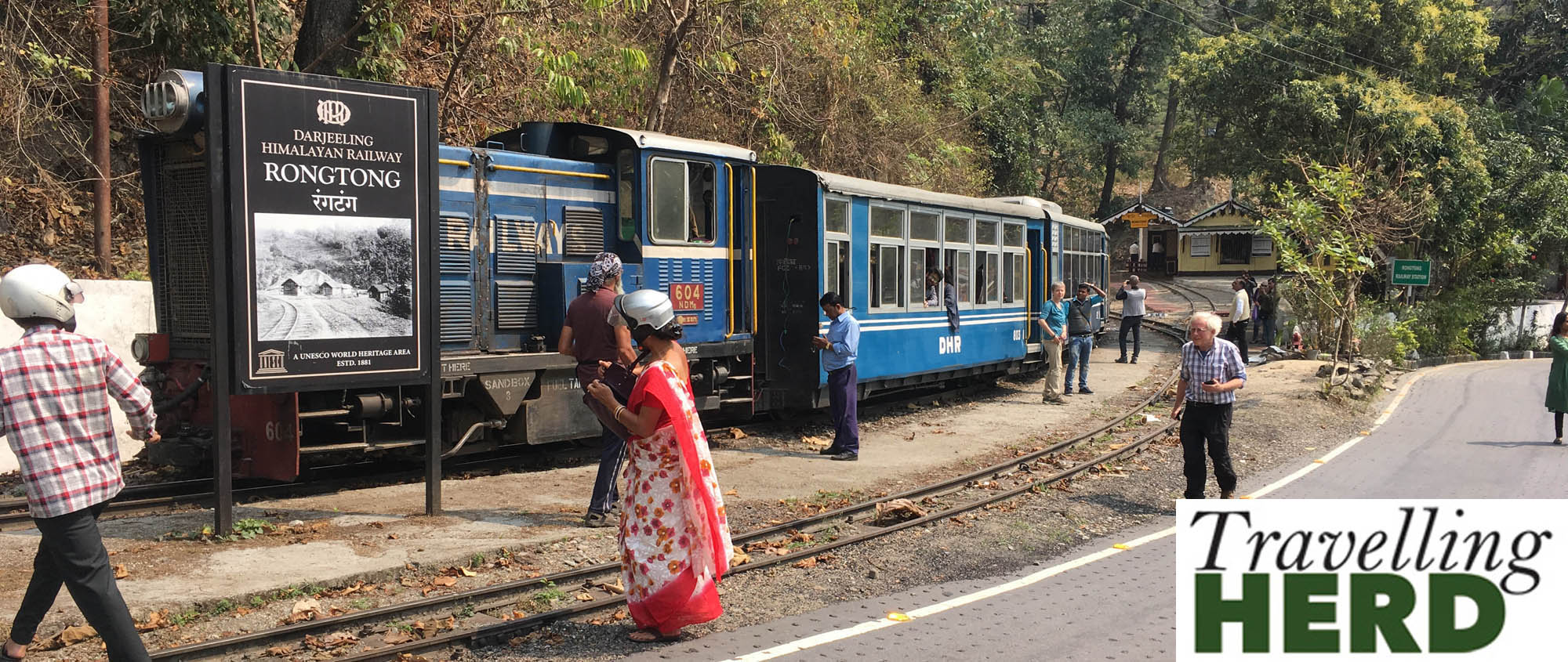
You can order food in advance to be phoned ahead, collected and paid for at Tindharia. As we weren’t sure of the provenance and are still wary of stomach upsets we did not take advantage of this service. However, we had been carefully collecting any rubbish we generated for future disposal and we were shocked when, after we had left the station, several of the local passengers threw their litter out of the train windows onto the scenery they had paid to travel through.
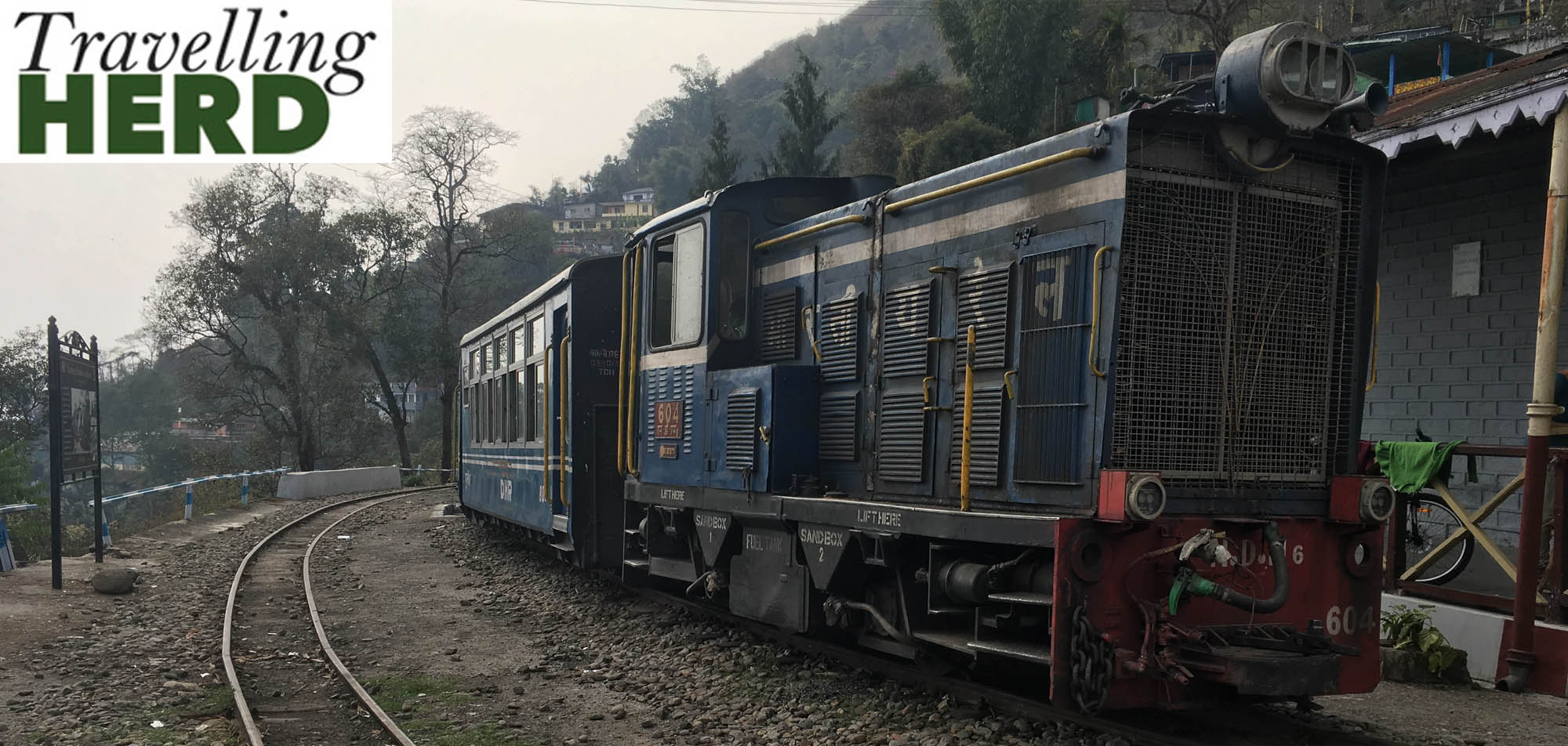
Built in 1881, the DHR pushed the conventional engineering of the time to its limits, using loops and reverses to keep a standard locomotive on the tracks using purely the weight of the train and carriages. The engineers used narrow gauge track and short wheel-based locomotives to negotiate the curves on the challenging terrain. There are neither tunnels nor bridges on this railway and, if the cloud cover had been higher or it had been a clear day, the views would have been spectacular.
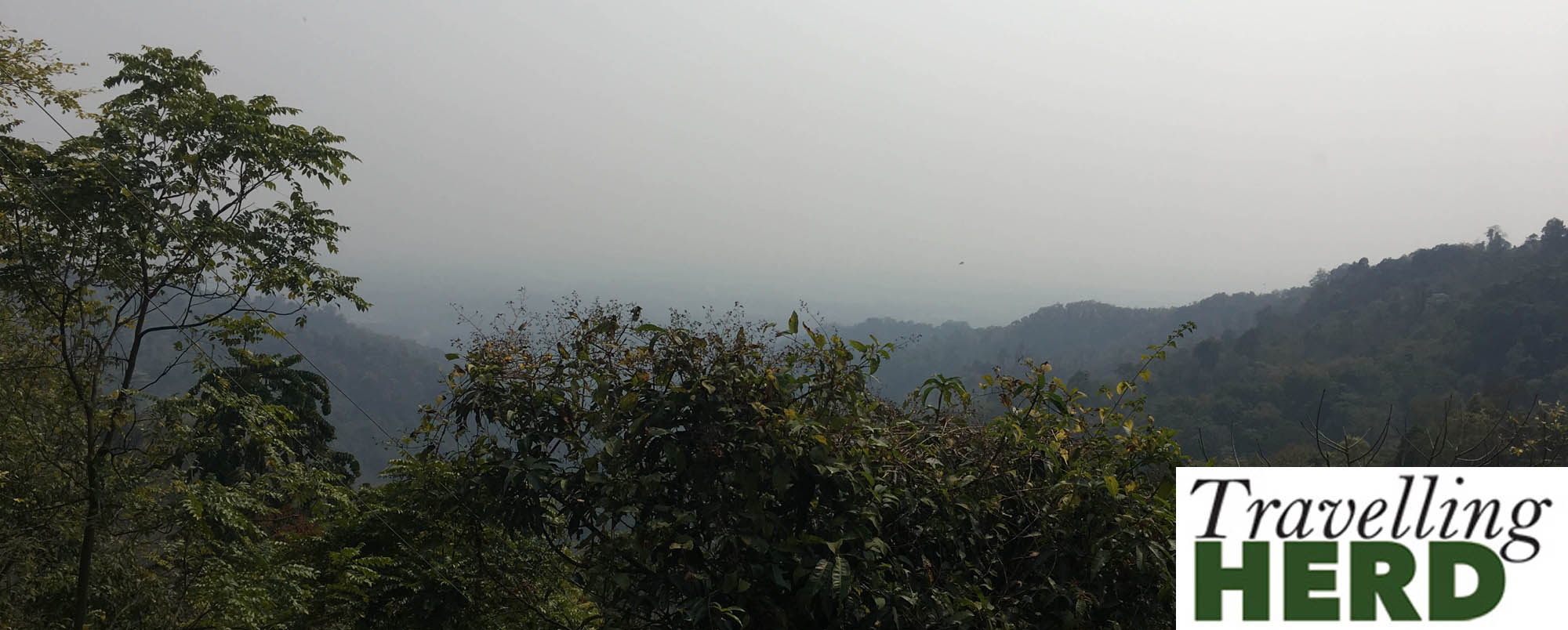
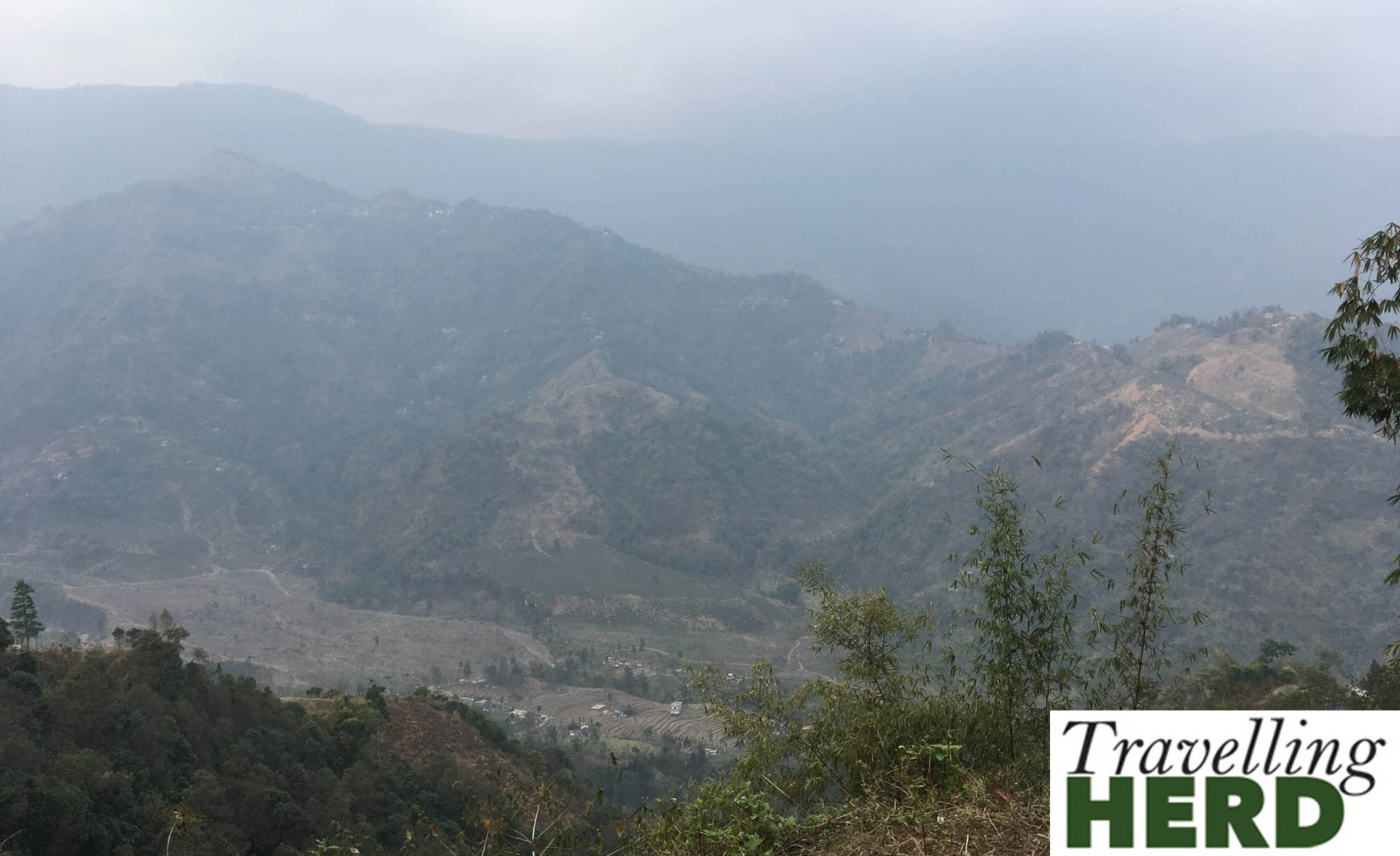
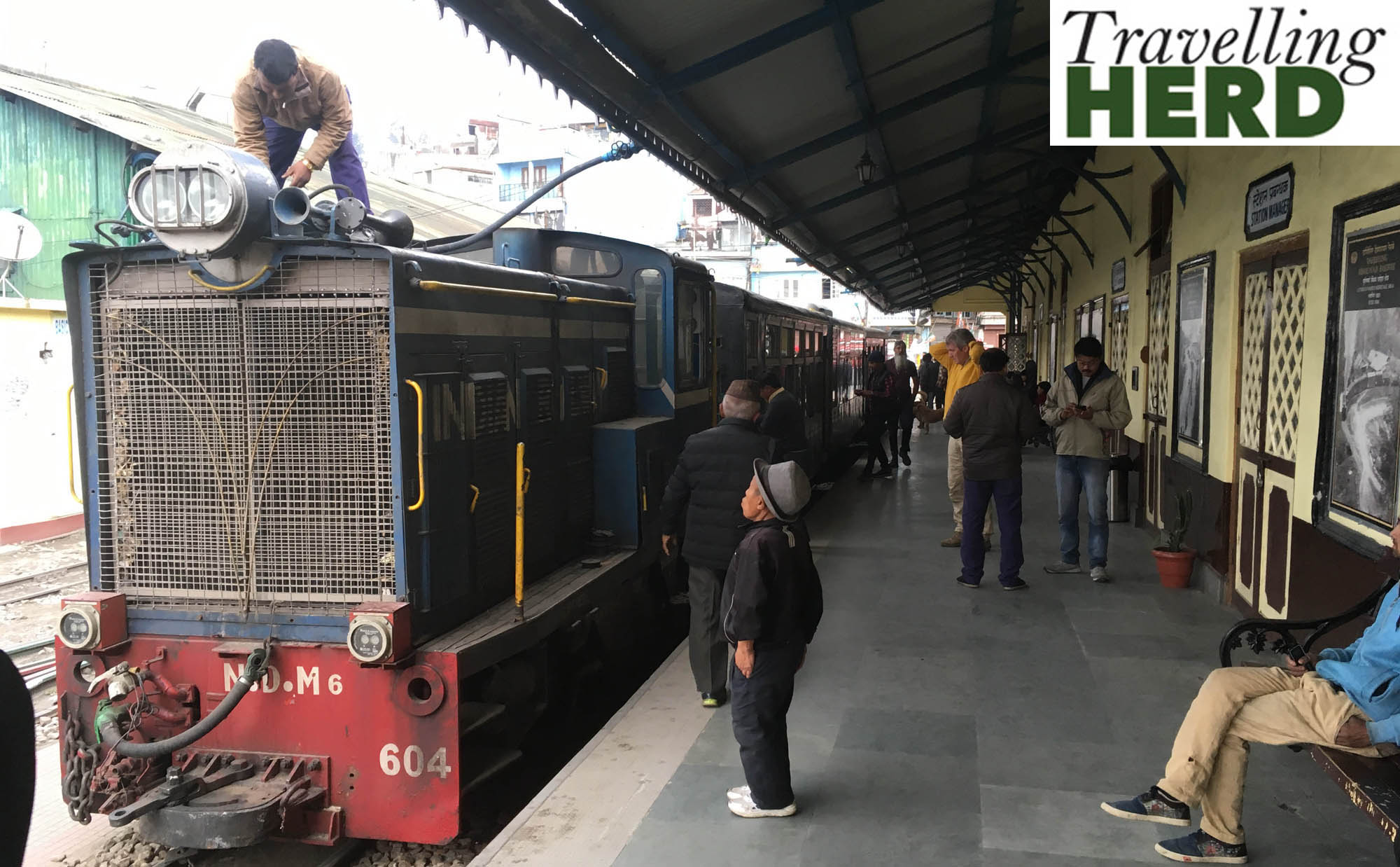
By the time we got to Ghum station it was dark and gloomy…

We arrived at Darjeeling at 18:53, three hours and twenty minutes after the scheduled arrival time.
Weary, but able to tick something off Robert’s bucket list, we took a cab to the Mayfair Hotel [much to be recommended] to be welcomed with scarves instead of garlands [which still matched Robert’s fleece], hot towels for weary travellers, and a cup of Darjeeling tea with biscuits, all before check in.

Current Route Map:

Distance travelled so far:
By Air to Delhi: 4,187miles
By 3 trains to Darjeeling: 960miles





